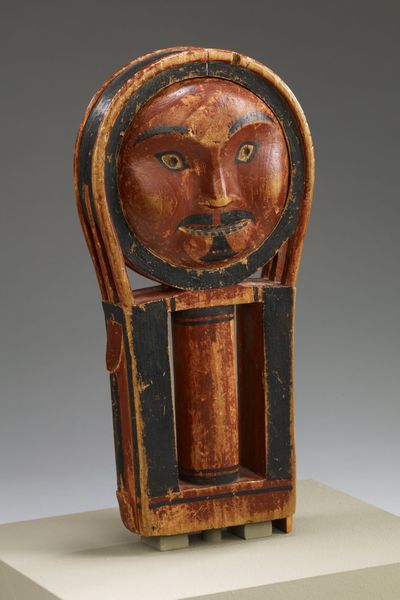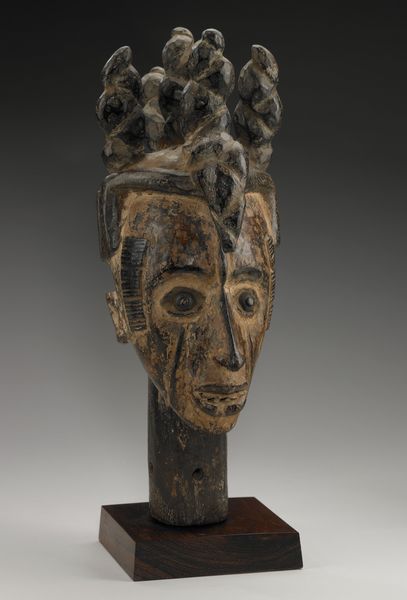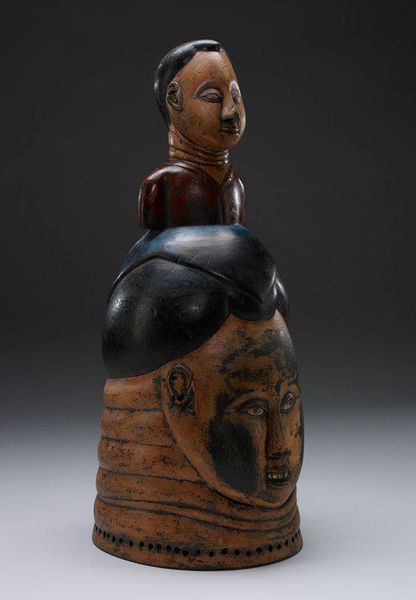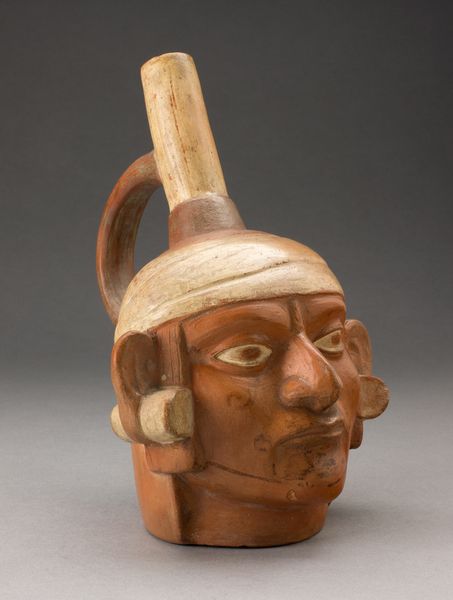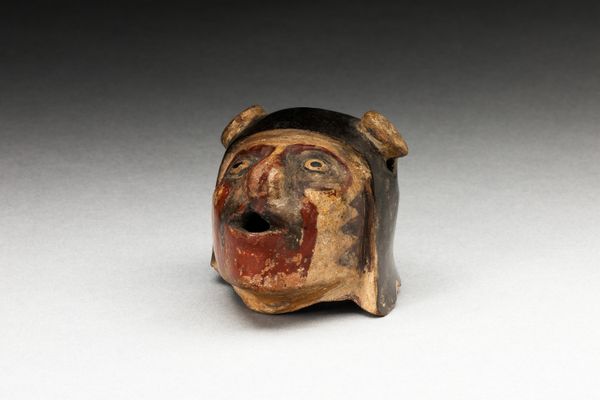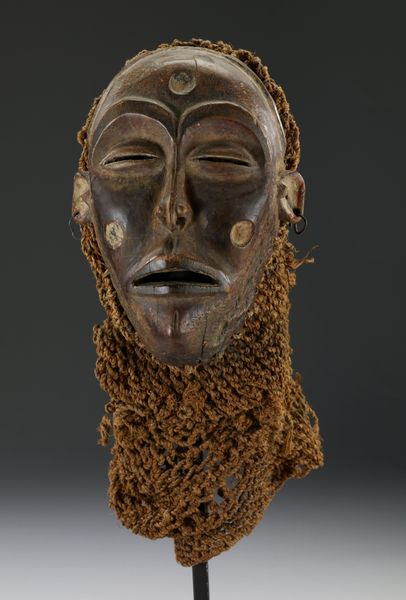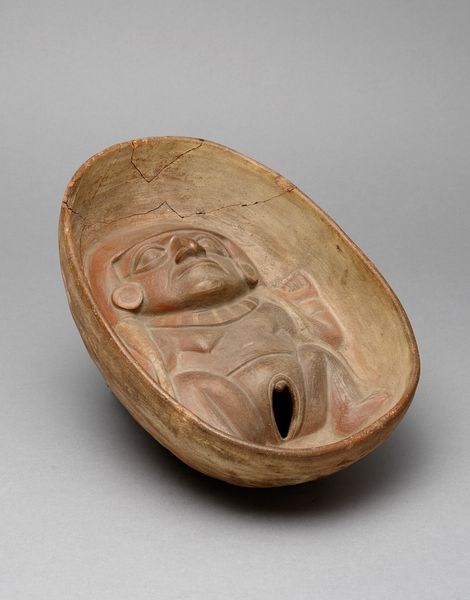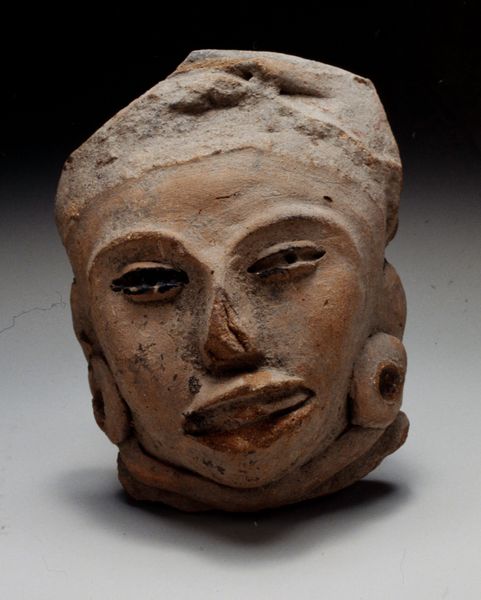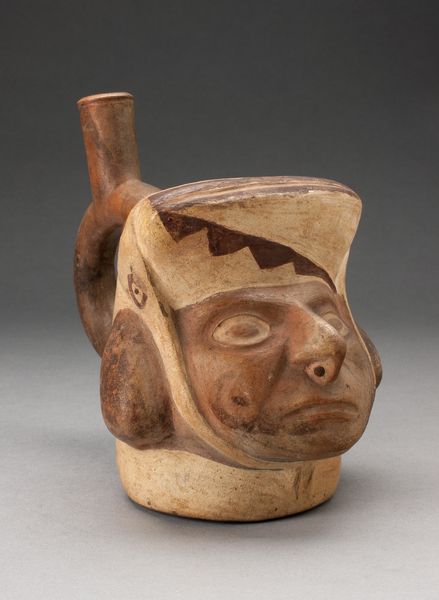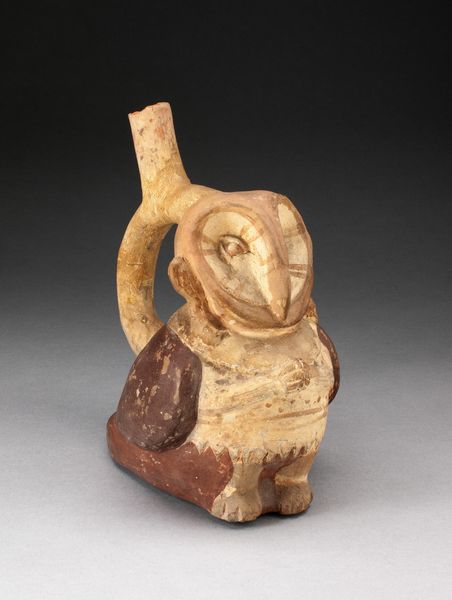
Fragment of a Jar in the Form of a Human Head, Possibly Deceased, Wearing a Nosering c. 100 - 500
0:00
0:00
ceramic, sculpture, terracotta
#
portrait
#
sculpture
#
ceramic
#
figuration
#
sculpture
#
terracotta
#
indigenous-americas
Dimensions: 24.1 × 13.7 × 21 cm (9 1/2 × 5 3/8 × 8 1/4 in.)
Copyright: Public Domain
This earthenware jar, sculpted by the Moche people, presents us with a human head, distinguished by a prominent nose ring. In Moche society, such adornments signified status and identity, yet here, coupled with the head’s closed eyes, it speaks of mortality. Consider the image of the closed eye. Across cultures, from ancient effigies to modern photography, closed eyes symbolize sleep, death, or a turning inward. They evoke not just the physical state but also a deeper psychological realm of memory and introspection. The Moche people, like the ancient Greeks with their funerary masks, captured the likeness of the deceased, perhaps believing that they could preserve something of the individual beyond life. This impulse, rooted in a shared human desire to transcend death, echoes through time. The image resonates with our own subconscious understanding of loss and remembrance, a powerful force engaging us on a deep, subconscious level. As this symbol resurfaces in varied forms, it reminds us of the cyclical, non-linear progression of human emotion and cultural memory.
Comments
No comments
Be the first to comment and join the conversation on the ultimate creative platform.

